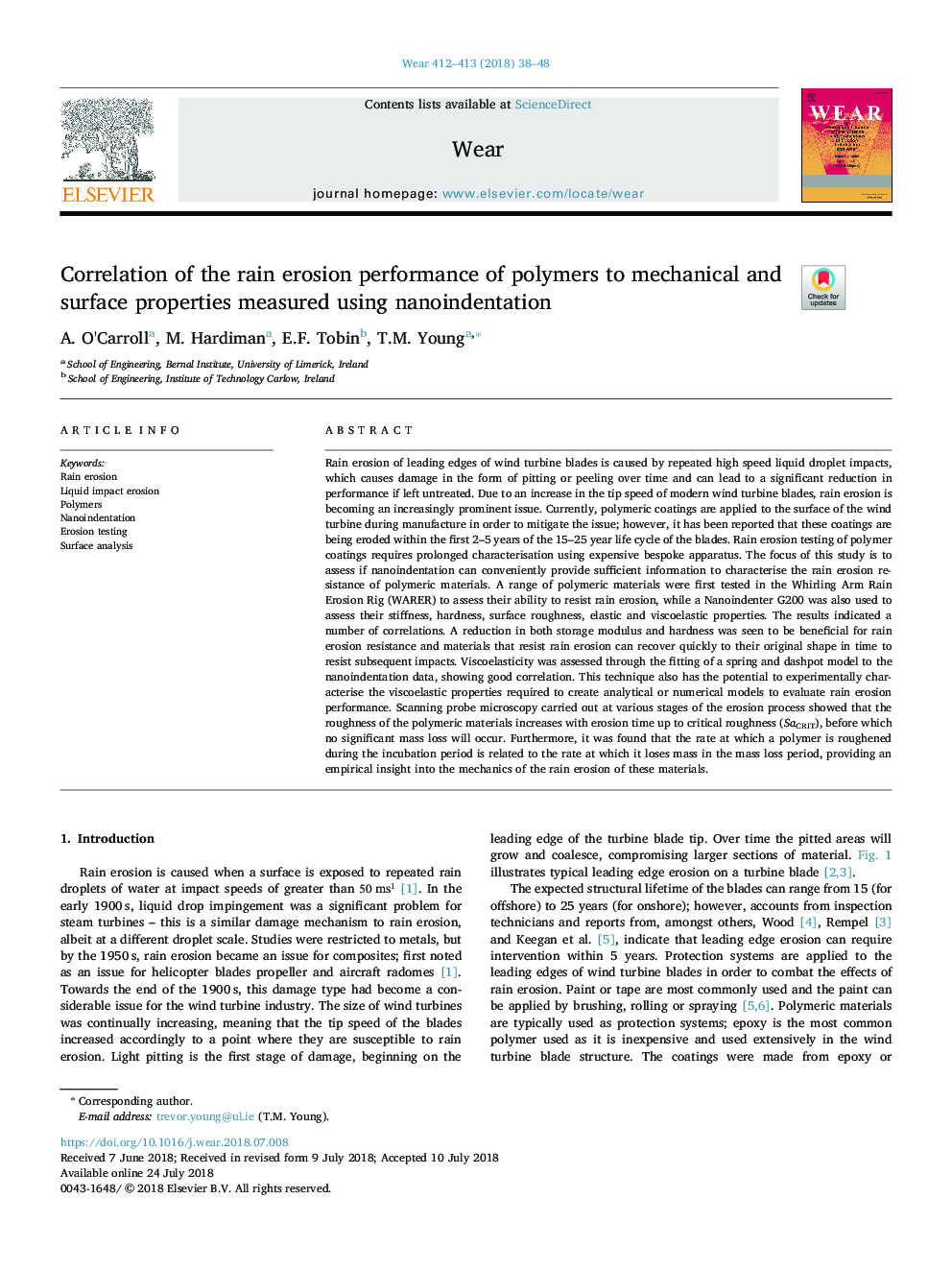| کد مقاله | کد نشریه | سال انتشار | مقاله انگلیسی | نسخه تمام متن |
|---|---|---|---|---|
| 7003698 | 1454934 | 2018 | 11 صفحه PDF | دانلود رایگان |
عنوان انگلیسی مقاله ISI
Correlation of the rain erosion performance of polymers to mechanical and surface properties measured using nanoindentation
دانلود مقاله + سفارش ترجمه
دانلود مقاله ISI انگلیسی
رایگان برای ایرانیان
کلمات کلیدی
موضوعات مرتبط
مهندسی و علوم پایه
مهندسی شیمی
شیمی کلوئیدی و سطحی
پیش نمایش صفحه اول مقاله

چکیده انگلیسی
Rain erosion of leading edges of wind turbine blades is caused by repeated high speed liquid droplet impacts, which causes damage in the form of pitting or peeling over time and can lead to a significant reduction in performance if left untreated. Due to an increase in the tip speed of modern wind turbine blades, rain erosion is becoming an increasingly prominent issue. Currently, polymeric coatings are applied to the surface of the wind turbine during manufacture in order to mitigate the issue; however, it has been reported that these coatings are being eroded within the first 2-5 years of the 15-25 year life cycle of the blades. Rain erosion testing of polymer coatings requires prolonged characterisation using expensive bespoke apparatus. The focus of this study is to assess if nanoindentation can conveniently provide sufficient information to characterise the rain erosion resistance of polymeric materials. A range of polymeric materials were first tested in the Whirling Arm Rain Erosion Rig (WARER) to assess their ability to resist rain erosion, while a Nanoindenter G200 was also used to assess their stiffness, hardness, surface roughness, elastic and viscoelastic properties. The results indicated a number of correlations. A reduction in both storage modulus and hardness was seen to be beneficial for rain erosion resistance and materials that resist rain erosion can recover quickly to their original shape in time to resist subsequent impacts. Viscoelasticity was assessed through the fitting of a spring and dashpot model to the nanoindentation data, showing good correlation. This technique also has the potential to experimentally characterise the viscoelastic properties required to create analytical or numerical models to evaluate rain erosion performance. Scanning probe microscopy carried out at various stages of the erosion process showed that the roughness of the polymeric materials increases with erosion time up to critical roughness (SaCRIT), before which no significant mass loss will occur. Furthermore, it was found that the rate at which a polymer is roughened during the incubation period is related to the rate at which it loses mass in the mass loss period, providing an empirical insight into the mechanics of the rain erosion of these materials.
ناشر
Database: Elsevier - ScienceDirect (ساینس دایرکت)
Journal: Wear - Volumes 412â413, 15 October 2018, Pages 38-48
Journal: Wear - Volumes 412â413, 15 October 2018, Pages 38-48
نویسندگان
A. O'Carroll, M. Hardiman, E.F. Tobin, T.M. Young,